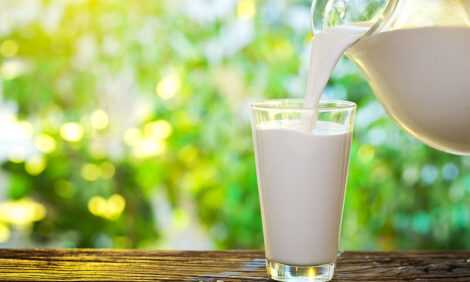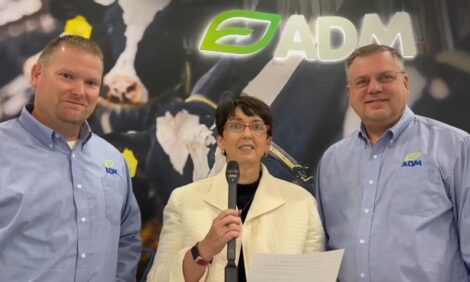



Identifying Profitable Beef Bulls for Use in Irish Dairy Herds
TEAGASC Researchers at the Animal and Grassland Research and Innovations Centre have been working to create a new index which should facilitate easy identification of the most suitable beef bulls for use in dairy herds.Introduction
Considerable transfer of germplasm occurs between Irish dairy and beef herds. In 2010 approximately 40% of dairy cows were bred to beef bulls, with Angus (14%), Hereford (10%) and Limousin (6%) being the most used breeds. When using beef bulls on their herd, dairy farmers wish to produce an easy calved, good quality, live calf that has little effect on the subsequent lactational performance of its dam. To date, however, dairy farmers have no specific tool to facilitate selection of the most profitable beef bull for use in their herd. The aim of this study was to develop a new breeding index for dairy farmers that will aid in the selection of beef bulls.
Materials and Methods
For the development of any breeding goal, knowledge of three key components is required: 1) traits that influence the breeding goal, 2) genetic parameters of traits included in the selection index; and 3) the optimum economic values for each trait. The traits of interest included in the new index were: calving difficulty, calf mortality, gestation length, and calf price. Heritability estimates for these traits have been calculated using Irish data previously (Berry et al., 2011; McHugh et al., 2011). The economic value for calving difficulty was derived from the costs associated with an increase in the incidence of difficult calvings from 6 to 7%. The economic cost includes the costs of increased stockman hours, veterinary interventions, cow mortality, disposal and infertility as well as of loss in milk sales (McHugh et al., 2012). The economic value for calf mortality was calculated as the cost of calf disposal plus the average value of an equivalent live calf. For gestation length the economic value was calculated as the benefit of a one day shorter calving interval. For each of the three traits described above the projected or current prices and costs were used in the calculation of the economic values. As a monetary value is assigned to each calf the economic value for calf price was implicitly assumed in the breeding value of the calf. Calf price was the average price paid for a calf sold between 2 and 42 days of age within the range of €2 to €450 (McHugh et al., 2011). A proportion of resultant female progeny from the mating of a beef bull to a dairy cow are likely to subsequently become replacement females in the beef herd. Therefore, the response to selection on this new index on genetic merit of, in particular, milk yield and fertility in beef animals was of interest. Thus, the correlation between this new index and milk and fertility sub-indices of the existing suckler beef value index (SBV) was quantified by correlating each sire’s EBV for both milk and fertility with the EBV calculated for each trait included the new index.
Results and Discussion
The calculated economic weights, along with the relative emphasis on each of the four traits are presented in Table 1. Decreases in calving difficulty, peri-natal mortality and gestation length increase farm profitability and this is reflected in the negative economic weightings for these three traits. Approximately two-thirds of the relative emphasis was placed on calf price, indicating the importance of high calf price to farm profitability as well as the large genetic variation in this trait. However the genetic standard deviation (25.7 kg) was considerably higher for calf price compared the other traits included in the index.
| Genetic Standard Deviation (?g), Economic Weighting and Relative Emphasis (%) for each of the Four Traits Included in the Index | |||
|---|---|---|---|
| Trait | ?g | Economic weighting | Relative emphasis |
| Calving difficulty | 2.94 | -3.84 | 27.04 |
| Calf mortality | 0.29 | -1.78 | 1.24 |
| Gestation length | 1.88 | -2.26 | 10.17 |
| Calf price | 25.7 | 1.00 | 61.55 |
Sire predicted transmitting abilities (PTAs) are currently available for calving difficulty, calf perinatal mortality
and gestation length and PTAs for calf price will be available from the ICBF in 2012. Therefore the index
value of an animal can be calculated simply as the sum of the economic weight times the respective PTA.
The correlation between the new index and the milk and fertility sub-indices of the SBV was moderately
positive (r=0.35). This indicates that selection of beef bulls on the new index will result in indirect selection for
improved milk and fertility traits in female progeny used as beef herd replacements, both of which are of key
economic importance to the suckler herd. Preliminary analysis of sire breeding values clearly shows that
this index favours easier calving sires with shorter gestation lengths. For example, results to date suggest
that Aberdeen Angus and Hereford sires will, on average, generate €37 greater profit per calf born to a dairy
dam compared to progeny of a Belgian Blue sire.
Conclusions
The formation of this new index will facilitate easy identification of the most profitable beef bulls for use in the dairy herd. It is envisaged that the new index will be launched in 2012.
Acknowledgements
The authors gratefully acknowledge funding from ABP Food Group.
References
Amer, P. (2010). Report generated for the ICBF.
Berry, D.P., & Evans, R.D. (2011). J. Anim. Sci. Submitted
Mc Hugh, N., Evans, R.D., Amer, P.R., Fahey, A.G., & Berry, D.P. (2011) J. Anim. Sci. 89:29-39.
McHugh, N., Kearney, J.F., & D.P. Berry. (2012). In: Proc. Agric. Res. Forum.
November 2012


